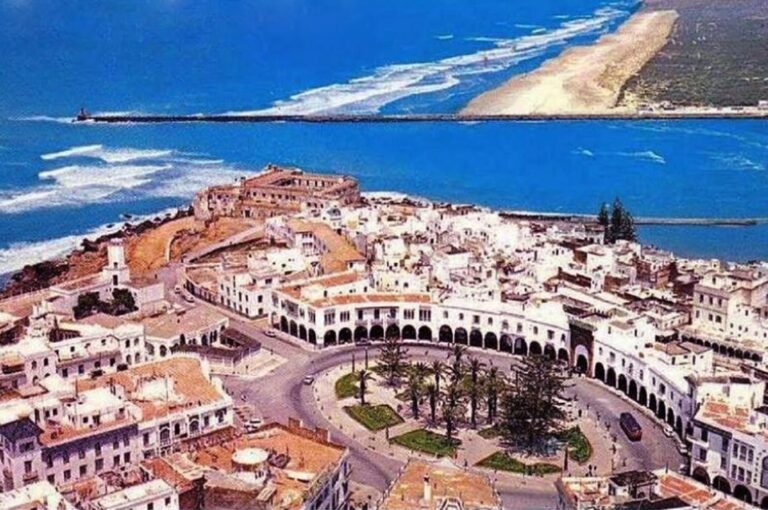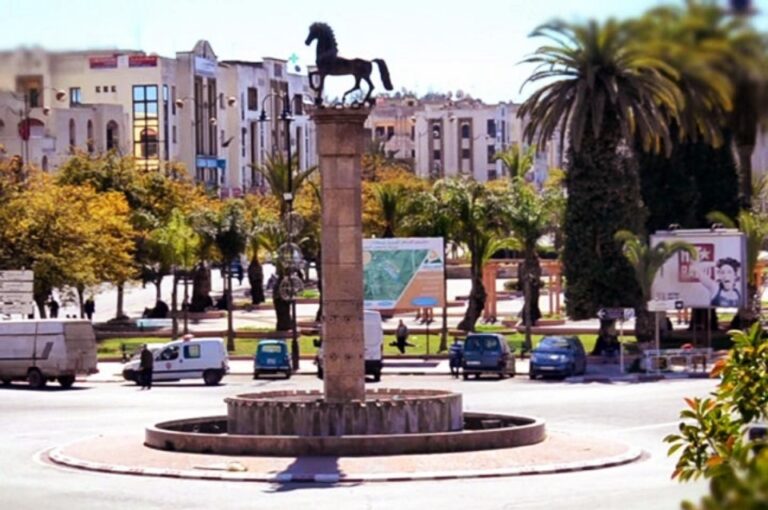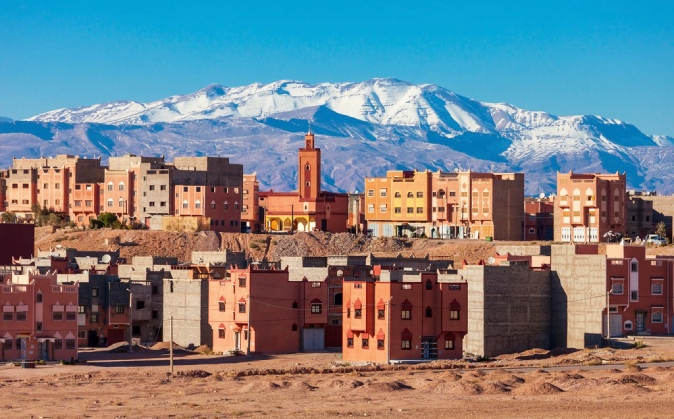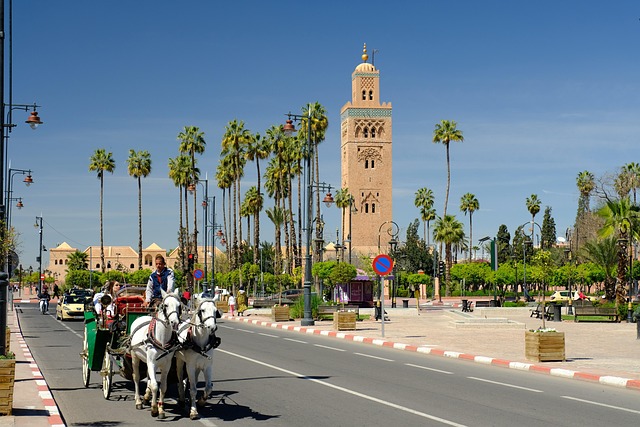Khouribga: The World’s Phosphate Capital with Local Charm
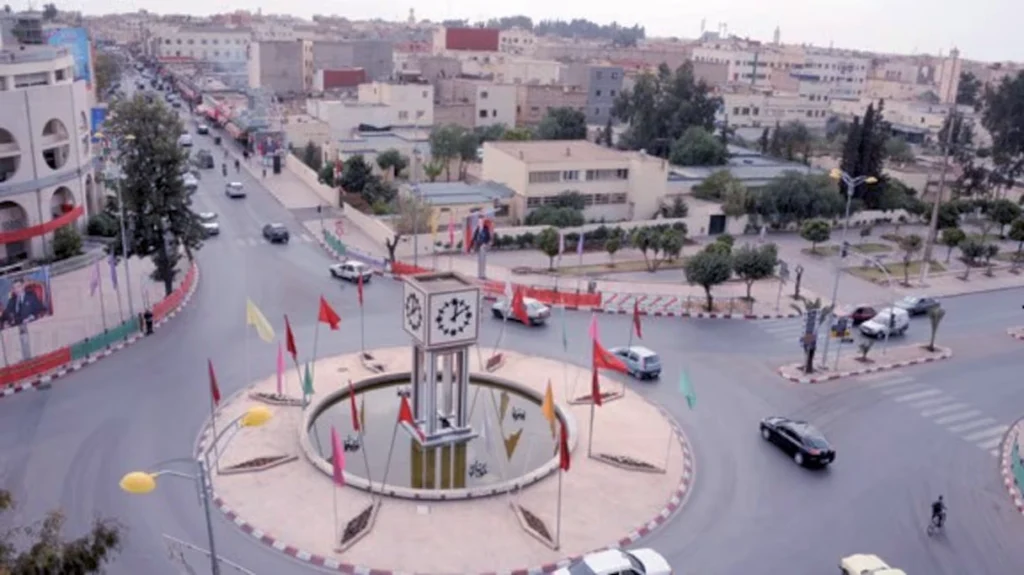
Deep in Morocco’s heartland, where vast phosphate reserves have shaped a city’s destiny and prosperity, lies Khouribga—a fascinating destination that offers visitors something rare in modern travel: an authentic glimpse into Morocco’s industrial revolution combined with genuine local hospitality untouched by mass tourism. This is the story of how natural resources transformed barren plains into a thriving metropolis, and how that transformation created a city unlike any other in the kingdom.
Located in the Chaouia-Ouardigha region, approximately 120 kilometers south of Casablanca, Khouribga stands as a testament to Morocco’s economic ambitions and mineral wealth. This city of over 200,000 inhabitants sits atop one of the world’s largest phosphate deposits, making it the operational heart of OCP Group (Office Chérifien des Phosphates), the world’s leading phosphate exporter and a cornerstone of Morocco’s economy.
What makes Khouribga compelling for curious travelers is precisely what sets it apart from typical tourist destinations. This is not a city of ancient medinas or UNESCO World Heritage sites, but rather a living example of modern Moroccan industrial development, where massive mining operations coexist with traditional culture, where workers’ neighborhoods display unique 20th-century urban planning, and where the rhythm of life follows the pulse of an industry that literally fuels global agriculture.
For travelers seeking authentic Moroccan experiences beyond the tourist trail, Khouribga offers unique opportunities: tours of massive open-pit phosphate mines that reveal the scale of modern mining, interactions with genuine working-class Moroccan communities, excellent local cuisine in family-run restaurants, and a perspective on Morocco that few international visitors ever witness. This is industrial tourism at its most fascinating, combined with the warmth and authenticity of a city where visitors remain novelties rather than nuisances.
Whether you’re fascinated by industrial heritage, seeking to understand Morocco’s economic engine, interested in mining and geology, or simply looking to experience authentic Moroccan urban life away from tourist crowds, Khouribga provides insights and experiences that challenge preconceptions about what makes a destination worth visiting.
The Phosphate Industry and Mining Heritage

Understanding Phosphate Mining
Khouribga sits at the center of one of Earth’s richest phosphate deposits, with reserves estimated to last for centuries. The phosphate rock mined here is crucial for producing fertilizers that feed billions globally, making Khouribga essential to global food security. Understanding this industry provides fascinating insights into how natural resources shape communities and economies.
OCP Group and Industrial Tours
The OCP Group dominates the city’s landscape and economy, operating some of the world’s largest open-pit phosphate mines. The company occasionally offers organized tours for educational groups and interested visitors, providing rare opportunities to witness massive mining operations, processing facilities, and the logistical systems that move millions of tons of material annually. These tours require advance arrangement through official channels.
Mining Museum and Educational Centers
Local facilities showcase the history and science of phosphate mining through exhibits featuring geological samples, historical mining equipment, and explanations of extraction and processing techniques. These educational centers help visitors understand the chemistry, geology, and global importance of phosphate resources.
Worker’s City and Urban Planning
The neighborhoods built by OCP for workers represent unique examples of mid-20th century industrial urban planning. These areas feature distinctive architecture, community facilities, and social infrastructure that reflect the company’s role in creating and sustaining the city. Walking tours reveal fascinating urban design principles and social organization.
Cultural Life and Local Authenticity
Traditional Markets and Souks
Khouribga’s markets provide authentic Moroccan shopping experiences without tourist pricing or manufactured “authentic” experiences. Local souks showcase regional crafts, fresh produce from surrounding agricultural areas, traditional clothing, and household goods. These markets function primarily for local residents, offering genuine glimpses into daily Moroccan life.
Community Culture and Daily Life
The city’s working-class character creates a distinct cultural atmosphere. Community centers, sports clubs, and neighborhood cafes serve as social hubs where visitors willing to engage respectfully can experience authentic Moroccan hospitality. The absence of tourist infrastructure means interactions feel genuine and unforced.
Religious and Social Customs
Khouribga’s mosques and religious institutions reflect the city’s relatively recent development, featuring modern Islamic architecture alongside traditional designs. Observing how religious life integrates with industrial rhythms provides interesting cultural insights.
Local Festivals and Celebrations
Throughout the year, community celebrations and local festivals showcase regional traditions, music, and customs. These events, primarily attended by residents rather than tourists, offer authentic cultural experiences for visitors fortunate enough to time their visits appropriately.
Culinary Experiences and Local Flavors

Working-Class Moroccan Cuisine
Khouribga’s restaurants serve hearty, authentic Moroccan food at prices reflecting local rather than tourist economies. Family-run establishments offer excellent tagines, couscous, grilled meats, and traditional dishes prepared for local palates rather than international tastes, providing truly authentic culinary experiences.
Street Food and Local Specialties
The city’s street food scene offers various Moroccan classics including fresh bread, msemen (Moroccan pancakes), harira soup, and grilled meat sandwiches. Local bakeries produce traditional breads and pastries that form the foundation of Moroccan meals.
Tea Culture and Cafes
Neighborhood cafes serve as social centers where traditional mint tea accompanies conversations, games, and community interaction. These establishments welcome respectful visitors interested in experiencing authentic Moroccan cafe culture without tourist-oriented modifications.
Market Fresh Ingredients
Local markets provide access to fresh regional produce, spices, olives, and traditional ingredients. Shopping at these markets offers insights into Moroccan cooking traditions and opportunities to observe how ingredients move from agricultural regions through local commerce to family tables.
Surrounding Natural Attractions

Oum Er-Rbia River Valley
Located approximately 50 kilometers from Khouribga, the Oum Er-Rbia River creates verdant valleys that contrast dramatically with the city’s industrial landscape. The area offers opportunities for nature walks, picnics, and observation of agricultural life along Morocco’s second-longest river.
Lake Massira
This large reservoir, about 30 kilometers from the city, provides recreational opportunities including fishing, boating, and birdwatching. The lake’s creation for agricultural irrigation transformed the region and created diverse ecosystems that support various wildlife species.
Surrounding Plains and Agricultural Areas
The plains surrounding Khouribga showcase Moroccan agriculture, with vast wheat fields, olive groves, and other crops. Drives through these areas reveal rural Moroccan life and the agricultural context that complements the city’s industrial character.
Geological Sites and Fossil Hunting
The region’s geology, which created the phosphate deposits, also preserved numerous fossils. Local enthusiasts and guides can direct visitors to areas where fossilized marine life from ancient seas can be observed, providing fascinating connections between past and present.
Modern Amenities and Urban Development
Sports and Recreation Facilities
The city boasts numerous sports facilities including soccer stadiums, athletic tracks, swimming pools, and sports complexes built by OCP for workers and community use. Many facilities welcome visitors, and attending local sporting events provides insights into community passion and social dynamics.
Educational Institutions
Khouribga hosts various educational institutions including technical schools, training centers, and university facilities focused on mining, engineering, and related fields. These institutions reflect the city’s commitment to education and professional development within the mining sector.
Shopping and Commercial Centers
Modern shopping centers coexist with traditional markets, providing diverse retail experiences. These facilities serve local populations rather than tourists, offering genuine Moroccan commercial culture and contemporary consumer trends.
Healthcare and Essential Services
As an industrial city, Khouribga maintains good healthcare facilities, banking services, and essential infrastructure. The presence of these services makes it a practical base for exploring the region while ensuring visitor needs can be met.
Day Trips and Regional Exploration
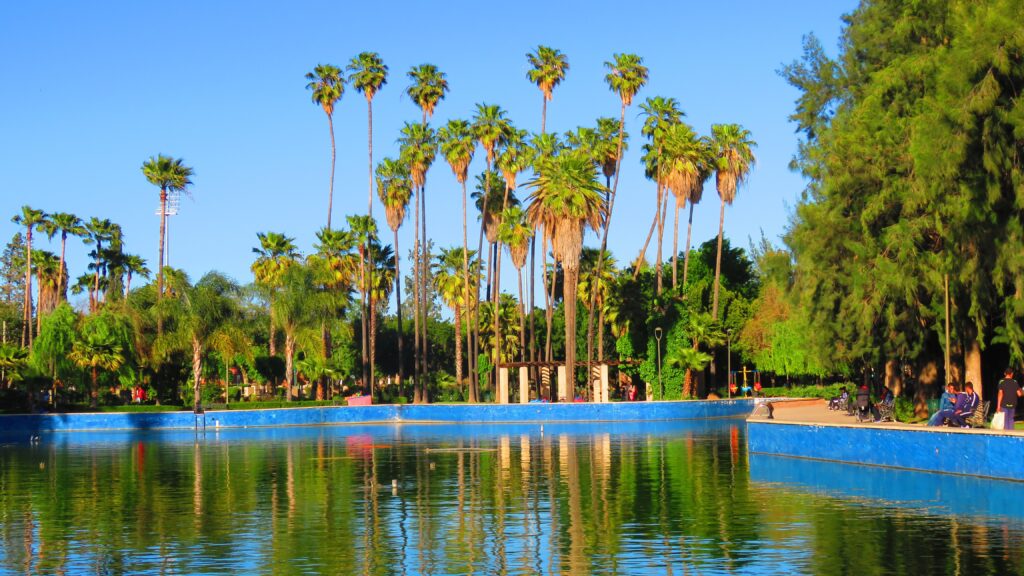
Beni Mellal Excursions
The beautiful city of Beni Mellal lies approximately 100 kilometers from Khouribga, making it accessible for day trips. Visitors can explore the famous Ain Asserdoun spring, visit the historic kasbah, and enjoy the dramatically different landscape of the Middle Atlas foothills.
Casablanca Connections
The two-hour journey to Casablanca provides opportunities to experience Morocco’s economic capital, visit the Hassan II Mosque, explore urban culture, and access international amenities while maintaining a base in more affordable and authentic Khouribga.
Settat and Historical Sites
The nearby city of Settat offers historical attractions and different urban perspectives. The surrounding region contains various historical sites and small towns that provide context for understanding the area’s development before the phosphate boom.
Rural Villages and Traditional Life
Small villages surrounding Khouribga maintain traditional agricultural lifestyles that contrast with the city’s industrial character. Respectful visits to these communities offer insights into rural Moroccan life and traditional customs that persist alongside modern development.
Practical Travel Information

Getting There and Transportation
Khouribga is accessible by road from major Moroccan cities, with regular bus services connecting to Casablanca, Marrakech, and other destinations. The journey from Casablanca takes approximately 2 hours by car or bus. Local transportation includes taxis and buses for moving around the city.
Accommodation Options
Accommodation ranges from modest hotels serving business travelers and OCP visitors to guesthouses and apartments. While not offering luxury resort experiences, available options provide clean, comfortable lodging at very reasonable prices reflecting local rather than tourist economies.
Language Considerations
Arabic and French are the primary languages, with English much less common than in major tourist destinations. Learning basic Arabic or French phrases significantly enhances the experience, and visitors should be prepared for language challenges.
Climate and Visiting Seasons
Khouribga experiences a continental climate with hot summers and mild winters. Spring (March-May) and autumn (September-November) offer the most comfortable weather for exploring. Summer temperatures can exceed 40°C, while winters bring cool temperatures and occasional rain.
Tips and Recommendations
Cultural Sensitivity and Respect
- Remember you’re visiting a working city, not a tourist attraction
- Respect industrial sites and follow all safety regulations
- Ask permission before photographing people or private property
- Dress modestly and respectfully for local customs
- Be patient with language barriers and cultural differences
What to Pack
- Comfortable walking shoes for exploring the city
- Modest clothing appropriate for a conservative community
- Sun protection for hot weather
- Light jacket for cooler evenings
- Arabic or French phrasebook or translation app
- Camera for documenting industrial landscapes
Safety and Practical Matters
- Khouribga is generally very safe with low crime rates
- Industrial areas may have restrictions; always seek permission
- Carry identification documents
- Inform accommodation of travel plans when exploring remote areas
- Use registered taxis for transportation
Money and Economics
- Expect significantly lower prices than in tourist destinations
- Cash is essential; credit card acceptance is limited
- ATMs are available but may not always accept international cards
- Bargaining is appropriate in markets but not in fixed-price establishments
Hidden Gems and Authentic Experiences

Local Sports Culture
Attending local soccer matches provides insights into community passion and social dynamics. The atmosphere at local games reflects genuine fan culture without commercialization.
Traditional Hammams
Neighborhood bathhouses offer authentic Moroccan wellness experiences at prices reflecting local economics. These facilities provide cultural immersion and insights into traditional hygiene and social customs.
Worker’s Clubs and Social Centers
Some community centers welcome respectful visitors interested in understanding social organization and recreational life in industrial communities. These facilities often feature sports, cultural activities, and social programs.
Industrial Photography
With appropriate permissions, the industrial landscapes around Khouribga offer spectacular photography opportunities. The contrast between massive mining operations and human-scale urban development creates dramatic visual compositions.
Sunset Viewpoints
Several elevated areas around the city provide panoramic views of the urban landscape, mining operations, and surrounding plains. Local residents can direct visitors to the best vantage points for photography and contemplation.
FAQs
Q1: Why would tourists visit an industrial city like Khouribga? A: Khouribga offers unique insights into modern Morocco beyond tourist stereotypes. Visitors interested in industrial heritage, economic development, authentic local culture, or understanding how natural resources shape communities find Khouribga fascinating. It provides genuine Moroccan experiences without tourist crowds or inflated prices, appealing to travelers seeking authenticity and cultural depth rather than conventional attractions.
Q2: Can visitors tour the phosphate mines and OCP facilities? A: While OCP occasionally organizes educational tours for groups and researchers, casual tourist access is limited due to safety and security considerations. Interested visitors should contact OCP’s public relations department well in advance to inquire about tour possibilities. The mining museum and educational centers provide insights for those unable to access active mining operations.
Q3: Is Khouribga safe for international tourists? A: Yes, Khouribga is very safe with low crime rates and a welcoming population. As a working industrial city rather than a tourist destination, visitors might initially feel conspicuous, but this usually leads to curious hospitality rather than problems. Standard travel precautions are sufficient, and the absence of tourist-focused scams actually enhances safety.
Q4: What’s the best way to experience authentic local culture in Khouribga? A: Spend time in local cafes, visit neighborhood markets, attend community sporting events, and engage respectfully with residents. Learning basic Arabic or French phrases helps significantly. Staying in modest local accommodations rather than international chains, eating at family-run restaurants, and showing genuine interest in people’s lives creates opportunities for authentic cultural exchange.
Q5: How many days should I plan for visiting Khouribga? A: Most visitors allocate 1-2 days to experience the city itself, often as part of broader regional exploration. This allows time to visit local attractions, experience authentic culture, and potentially arrange industrial site visits. Adding extra days enables day trips to nearby attractions like Beni Mellal or deeper immersion in local community life. The city also serves as an affordable base for exploring central Morocco.



